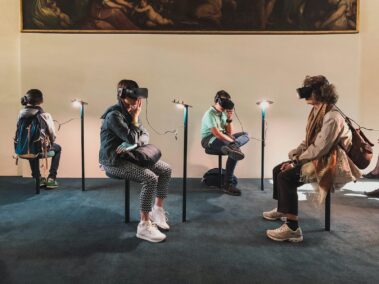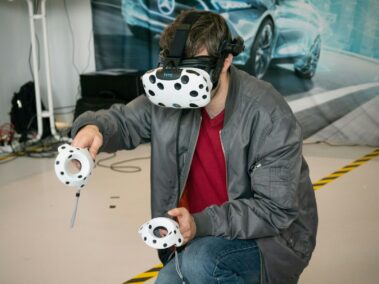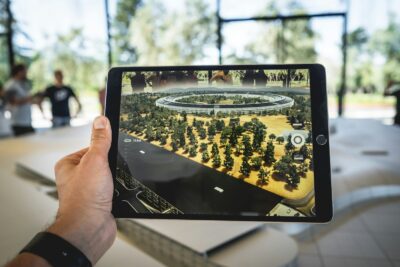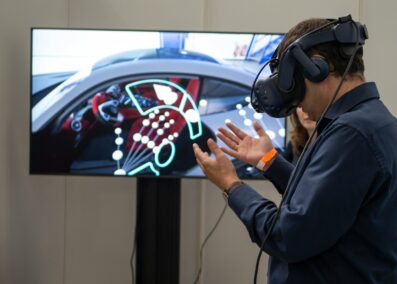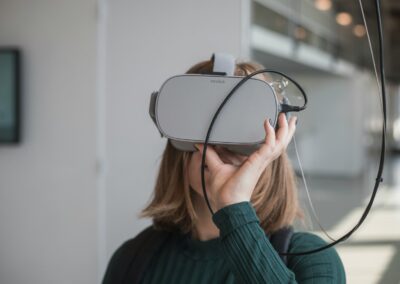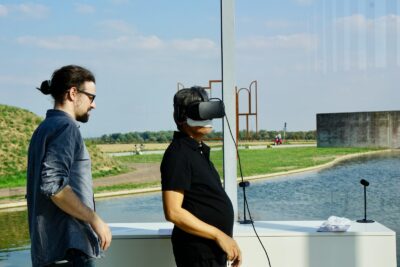Unleashing Immersive Experiences with 5G-Powered AR
5G Revolutionizes Augmented Reality Applications
Augmented reality (AR) has long promised to bridge the gap between the physical and digital worlds, offering immersive and interactive experiences. However, limitations in network infrastructure and processing power have hindered its full potential. Enter 5G, the next generation of wireless technology, poised to unleash a new era of AR applications with unprecedented performance and capabilities.
Seamless, Real-Time AR Experiences
The high-speed and low-latency characteristics of 5G are crucial for delivering seamless and real-time AR experiences. AR applications rely on continuous data transmission and processing to overlay digital content onto the real world in real time. 5G’s significantly faster speeds and reduced latency eliminate lag and buffering, allowing for smooth and responsive AR interactions. Whether it’s navigating through a virtual cityscape, playing an AR game with friends, or using AR for industrial training, 5G ensures a fluid and immersive experience.
Mobile AR: Unleashing the Power of AR on the Go
5G’s widespread availability and high bandwidth are set to propel the adoption of mobile AR applications. With 5G, users can access high-quality AR experiences on their smartphones and tablets without being tethered to a Wi-Fi network. This opens up a plethora of possibilities, from interactive shopping experiences that allow customers to visualize products in their homes to immersive educational apps that transport students to historical sites or scientific simulations. The convenience and accessibility of mobile AR powered by 5G are poised to revolutionize the way we interact with the world around us.
Cloud-Based AR: Expanding the Boundaries of AR Capabilities
5G’s high bandwidth and low latency also enable the seamless integration of cloud computing with AR applications. By offloading computationally intensive tasks to the cloud, 5G allows for the creation of more complex and sophisticated AR experiences on mobile devices. This means AR applications can leverage advanced computer vision, machine learning, and artificial intelligence algorithms without draining the battery or slowing down the device. Cloud-based AR opens up a new realm of possibilities, from real-time object recognition and translation to personalized AR experiences that adapt to the user’s context and preferences.
5G’s Impact on Industries and the Future of AR
Transforming Industries with AR and 5G
The convergence of 5G and AR is poised to transform a wide range of industries. In healthcare, surgeons can use AR overlays to visualize patient anatomy during surgery, improving precision and reducing risks. In manufacturing, technicians can use AR to access real-time instructions and guidance for complex maintenance tasks, improving efficiency and safety. In retail, AR can create immersive shopping experiences, allowing customers to try on clothes virtually or visualize furniture in their homes. The possibilities are endless, and 5G is the key to unlocking the full potential of AR across various sectors.
5G Infrastructure: The Foundation for AR’s Future
While the promise of 5G-powered AR is exciting, it’s important to acknowledge that widespread adoption depends on the availability of robust 5G infrastructure. Governments and telecommunications companies around the world are investing heavily in 5G networks, recognizing its potential to drive economic growth and innovation. In the Middle East, countries like Saudi Arabia and the UAE are leading the way in 5G deployment, with ambitious plans to build world-class digital infrastructure. This commitment to 5G is creating a fertile ground for AR applications to flourish, positioning the region as a hub for AR innovation.
The Future of AR: A 5G-Powered Reality
As 5G networks continue to expand and mature, we can expect to see a proliferation of AR applications that will fundamentally change the way we interact with the digital world. From enhanced gaming and entertainment experiences to improved productivity and efficiency in various industries, 5G-powered AR is set to reshape our lives in ways we can only imagine. The future of AR is inextricably linked to 5G, and the possibilities are limited only by our imagination.
Ethical Considerations and Responsible AR Development
With the rapid advancement of 5G and AR technologies, it is essential to consider the ethical implications and ensure responsible development of AR applications. Issues such as privacy, security, and the potential for misuse of AR need to be addressed proactively. Developers and policymakers must work together to establish guidelines and standards that promote ethical and responsible use of AR. By prioritizing transparency, user consent, and data protection, we can ensure that AR technology is used for the betterment of society and not for harm.
5G and AR: A Convergence That Will Define the Future
The convergence of 5G and AR is not just a technological advancement; it is a paradigm shift that will redefine how we interact with the world around us. 5G’s high-speed, low-latency connectivity is the missing piece that will unlock the full potential of AR, enabling a new era of immersive, interactive, and transformative experiences. As we move towards a more connected and digital future, the combination of 5G and AR will play a pivotal role in shaping our lives, our work, and our understanding of the world.
#5G #AugmentedReality #AR #immersiveexperiences #mobileAR #spatialcomputing #5Ginfrastructure #digitaltransformation #futureoftech #ARgaming










